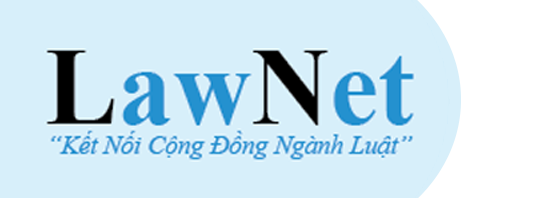Notable new policies of Vietnam effective as of the middle of March 2025
Conditions for proposing investment in new eco-industrial parks from March 15, 2025, funding sources and funding support for operations of commune-level People’s Inspection Committees, and structure of the competency framework for learners from March 11, 2025, are notable policies that will be covered in this bulletin.
- Notable new policies of Vietnam to be effective as of the start of April 2025 / Notable new policies of Vietnam effective from the end of March 2025 / Notable new policies of Vietnam to be effective as of the start of March 2025 / Notable new policies of Vietnam effective from the end of February 2025
Conditions for proposing investment in new eco-industrial parks in Vietnam from March 15, 2025
On January 24, 2025, the Ministry of Planning and Investment of Vietnam promulgated Circular No. 05/2025/TT-BKHDT on guidelines for the construction of eco-industrial parks.
According to Article 5 of Circular No. 05/2025/TT-BKHDT, the conditions for proposing investment in new eco-industrial parks are as follows:
- Proposals for investment projects or reports on pre-feasibility studies on projects on investments in the infrastructures of eco-industrial parks include the content prescribed in Point a Clause 2 Article 8 and Point a Clause 2 Article 38 of Decree No. 35/2022/ND-CP.
- The content considered for satisfaction of conditions of investment projects on the construction and business of infrastructures of eco-industrial parks prescribed in Point a Clause 2 Article 38 of Decree No. 35/2022/ND-CP includes:
+Expected main sectors and professions attracting investment in industrial parks, determined under construction planning of industrial parks approved by competent state authorities;
+ Expected emission levels of main sectors and professions prescribed in Point a Clause 1 of this Article, calculated based on the guidelines for greenhouse gas inventory of the Intergovernmental Panel on Climate Change (IPCC) or relevant international instruments and guidelines for greenhouse gas inventory of specific sectors and fields promulgated by competent authorities.
+ Expected schemes for industrial symbiosis according to Clause 1 Article 2 of Circular No. 05/2025/TT-BKHDT.
+ Schemes for developing and implementing mechanisms for input and output supervision of industrial parks regarding the use of materials, water, energy, chemicals, waste, and scraps that may be formulated and implemented on the system prescribed in Point b Clause 1 Article 3 of Circular No. 05/2025/TT-BKHDT.
+ Schemes for implementing social responsibilities for surrounding communities that may be developed based on the Corporate Social Responsibility (CSR) Report, Environmental, Social, And Governance (ESG) Report, or similar reports on sustainable development.
+ Commitments to satisfy the criteria for determining eco-industrial parks according to Article 37 of Decree No. 35/2022/ND-CP within 8 years from the time eco-industrial parks are established and implementation roadmaps are determined.
See more details in Circular No. 05/2025/TT-BKHDT, effective as of March 15, 2025.
Funding sources and operational funding support for commune-level People’s Inspection Committees
On January 24, 2025, the Minister of Finance of Vietnam promulgated Circular No. 04/2025/TT-BTC on guidelines on the preparation of estimates and management, use, and settlement of funding for exercising grassroots-level democracy to provide operational funding support for People’s Inspection Committees of communes, wards, commune-level towns, state agencies, and public service providers.
Specifically, funding sources and operational funding support for commune-level People’s Inspection Committees, state agencies, and public service providers are as follows:
- The operational funding of the commune-level People’s Inspection Committees shall be guaranteed by the local budget. Based on local conditions and local budget balance capacity, the People’s Committees of provinces and centrally affiliated cities shall request the People’s Councils of the same level to decide on the operational funding support of the commune-level People’s Inspection Committees, at least 5 million/Committee/year and balance the commune-level budget.
- The operational funding support of the People’s Inspection Committees of state agencies and public service providers shall come from the following sources:
+ Trade union contributions according to the law and the regulations of the Vietnam General Confederation of Labor.
+ Autonomous funding according to the regulations on autonomy and self-responsibility for the use of payrolls and funding of state agencies.
+ Funding from autonomy-granted financial sources according to the regulations on the financial autonomy of public service providers.
+ Other legal funding sources.
See more details in Circular No. 04/2025/TT-BTC, which comes into force as of March 11, 2025 and annuls Circular No. 63/2017/TT-BTC.
Structure of competency framework for learners in Vietnam from March 11, 2025
On January 24, 2025, the Minister of Education and Training of Vietnam promulgated Circular No. 02/2025/TT-BGDDT on the competency framework for learners.
The structure of the competency framework for learners prescribed in the Appendix enclosed with Circular No. 02/2025/TT-BGDDT is as follows:
- The digital competency framework for learners includes 6 competence domains with 24 component competencies, divided into 4 levels, from the basic level to the advanced level according to 8 grades.
- Overview of competency domains:
(I) Utilization of data and information: focus on the capacity for searching, sorting, assessing, and managing data and information as well as digital content, including skills in determining trusted information sources, effectively organizing data, and using such data for supporting, deciding, or settling issues in the digital environment.
(II) Communication and cooperation in the digital environment: emphasize the capacity for using digital technologies for interactions, information sharing, teamwork, and participation in online communities, including skills in effectively communicating through digital channels, respecting cultural diversity, managing digital identity, and promoting cooperation in the digital environment.
(III) Digital content creation: focus on the capacity for creating, editing, and sharing digital content, including skills in developing new content, applying copyrights and licenses, engaging in basic programming, and integrating knowledge from multiple sources to create conformable and creative digital products.
(IV) Safety: focus on the protection of data, equipment, health, and digital environment, including skills in protecting personal information confidentiality, managing network risks, safely using digital technologies, ensuring mental and physical health during interactions in the digital environment, and promoting the responsibility for protecting the digital environment.
(V) Issue settlement: focus on the critical and creative thinking capacity to determine, analyze, and settle issues in the digital environment, including skills in remedying technical issues, learning new technologies, adjusting digital demands to achieve specific objectives, and using technologies to innovate or settle practical challenges.
(VI) Artificial intelligence application: focus on understanding, using, and assessing tools and artificial intelligence (AI) systems ethically and responsibly, including skills in recognizing how AI works, applying AI to practical tasks, assessing the ethical and social impacts of AI, and ensuring the transparent, fair, and responsible use of AI.
See more details in Circular No. 02/2025/TT-BGDDT, effective as of March 11, 2025.
Vietnam’s regulations on units of regional Customs Sub-departments
On October 5, 2025, the Customs Department promulgated Decision No. 10/QD-CHQ on offices, divisions, teams, and customs agencies at border checkpoints/outside of border checkpoints of regional Customs Sub-departments.
Specifically, Article 1 of Decision No. 10/QD-CHQ 2025 stipulates units of regional Customs Sub-departments as follows:
(1) Offices, divisions, and teams of regional Customs Sub-departments:
- Sub-departments of area I, Sub-departments of area II, Sub-departments of area III, Sub-departments of area VI, Sub-departments of area VII, Sub-departments of area VIII, Sub-departments of area IX, Sub-departments of area XI, Sub-departments of area XII, Sub-departments of area XV, Sub-departments of area XVI, Sub-departments of area XVIII, and Sub-departments of area XX shall have 7 units, including:
+ Offices;
+ Personnel and Organization Divisions;
+ Information Technology Divisions;
+ Risk Management Divisions;
+ Customs Divisions;
+ Customs Control Teams;
+ Re-inspection and Post-customs-clearance Teams.
- Sub-departments of area IV, Sub-departments of area V, Sub-departments of area X, Sub-departments of area XIII, Sub-departments of area XIV, Sub-departments of area XVII, and Sub-departments of area XIX shall have 6 units, including:
+ Offices;
+ Personnel and Organization Divisions;
+ Information Technology and Risk Management Divisions;
+ Customs Divisions;
+ Customs Control Teams;
+ Re-inspection and Post-customs-clearance Teams.
(2) Customs agencies at border checkpoints/outside of border checkpoints of regional Customs Sub-departments.
List of customs agencies at border checkpoints/outside of border checkpoints of regional Customs Sub-departments according to the enclosed Appendix.
See more details in Decision No. 10/QD-CHQ, effective as of March 15, 2025.
- Key word:
- Notable new policies of Vietnam
- Notable new policies of Vietnam effective as of the middle of April 2025
- Notable new policies of Vietnam to be effective as of the start of April 2025
- Notable new policies of Vietnam effective from the end of March 2025
- Notable new policies of Vietnam to be effective as of the start of March 2025
- Notable new policies of Vietnam effective from the end of February 2025
- Notable new policies of Vietnam effective from the middle of February 2025
-

- Notable new policies of Vietnam effective as of ...
- 16:26, 11/04/2025
-
.png)
- Notable new policies of Vietnam to be effective ...
- 16:04, 02/04/2025
-
.png)
- Notable new policies of Vietnam effective from ...
- 14:51, 21/03/2025
-
.png)
- Notable new policies of Vietnam to be effective ...
- 15:10, 04/03/2025
-

- Notable new policies of Vietnam to be effective ...
- 15:32, 06/02/2025
-

- Notable new policies of Vietnam effective as of ...
- 16:26, 11/04/2025
-
.Medium.png)
- Notable documents of Vietnam in the previous week ...
- 16:21, 11/04/2025
-
.Medium.png)
- Notable documents of Vietnam in the previous week ...
- 16:11, 02/04/2025
-
.Medium.png)
- Notable new policies of Vietnam to be effective ...
- 16:04, 02/04/2025
-
.Medium.png)
- Notable new policies of Vietnam effective from ...
- 14:51, 21/03/2025

 Article table of contents
Article table of contents
